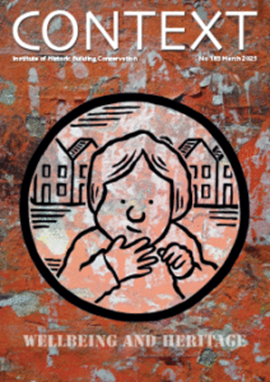Machicolation
In medieval fortifications, machicolations (derivation French: machicoulis) are openings in the upper sections of castles or other fortifications through which missiles, boiling oil and other objects could be thrown down onto attackers. The openings could be in either the vertical plane or in the floor.
In Italy they are known as ‘piombatoio’, in France ‘meurtriers’, and in England ‘murder holes’ and ‘drop boxes'.
They originated in Syria but the idea was transplanted to Europe by returning Crusaders. One of the earliest examples dates from the 13th century and can still be seen at Chateau de Farcheville, near Paris. Since the Medieval period they have been mostly restricted to decorative purposes.
The openings, usually as narrow as possible to minimise the chances of arrows hitting defenders, usually occur where a parapet extends outwards on corbels so as to project from the face of the wall; this gave the defenders a better top view of assailants and allowed more accuracy in dropping rocks and boiling liquids down onto their heads. Either to deceive the enemy or for aesthetics – or both – a parapet might have been extended outwards on corbels even if there were no machicolations behind.
Machicolations were best located above critical points, such as gateways and entrances but could also form a continuous line extending around a castle. They were common in French castles but in their UK counterparts were usually restricted to the areas above gateways, eg Conwy Castle, Wales, built 1283-1289.
[edit] Related articles on Designing Buildings
- Archaeology.
- Britain's historic paving.
- British Museum.
- Building a Crossing Tower: a design for Rouen Cathedral of 1516.
- Cathedral of Brasilia.
- Cologne Cathedral.
- Conservation.
- IHBC articles.
- Palace of Westminster.
- St Pauls Cathedral.
- St. Basil's Cathedral.
- The Institute of Historic Building Conservation.
IHBC NewsBlog
Old Sarum fire in listed (& disputed) WW1 Hangar - Wiltshire Council has sought legal advice after fire engulfed a listed First World War hangar that was embroiled in a lengthy planning dispute.
UK Antarctic Heritage Trust launches ‘Virtual Visit’ website area
The Trust calls on people to 'Immerse yourself in our heritage – Making Antarctica Accessible'
Southend Council pledge to force Kursaal owners to maintain building
The Council has pledged to use ‘every tool in the toolbox’ if urgent repairs are not carried out.
HE’s Research Magazine publishes a major study of the heritage of England’s suburbs
The article traces the long evolution of an internal programme to research 200 years of suburban growth
IHBC Context 183 Wellbeing and Heritage published
The issue explores issues at the intersection of heritage and wellbeing.
SAVE celebrates 50 years of campaigning 1975-2025
SAVE Britain’s Heritage has announced events across the country to celebrate bringing new life to remarkable buildings.
IHBC Annual School 2025 - Shrewsbury 12-14 June
Themed Heritage in Context – Value: Plan: Change, join in-person or online.
200th Anniversary Celebration of the Modern Railway Planned
The Stockton & Darlington Railway opened on September 27, 1825.
Competence Framework Launched for Sustainability in the Built Environment
The Construction Industry Council (CIC) and the Edge have jointly published the framework.
Historic England Launches Wellbeing Strategy for Heritage
Whether through visiting, volunteering, learning or creative practice, engaging with heritage can strengthen confidence, resilience, hope and social connections.














Comments